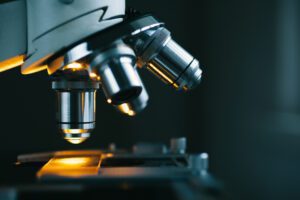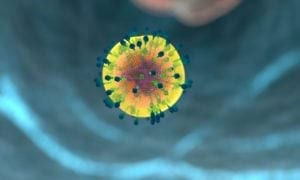Abderhalden-Kaufmann-Lignac Syndrome
What is Abderhalden-Kaufmann-Lignac Syndrome?
Abderhalden-Kaufmann-Lignac Syndrome (AKL Syndrome) is a rare genetic disorder that presents itself during infancy and early childhood. AKL Syndrome is associated with widespread deposits of cystine crystals in various parts of the body, especially the conjunctiva and cornea. The excessive build up of cystine crystals can damage cells. AKL syndrome is also known as Nephropathic Cystinosis and is the most severe type of cystinosis. AKL Syndrome creates kidney damage and inhibits normal growth. Poor kidney function leads to the loss of salts and minerals in the body that are crucial to normal growth patterns.What are the symptoms of Abderhalden-Kaufmann-Lignac Syndrome?
AKL Syndrome symptoms may include slow growth, excess thirst, dehydration, increased urination, and occasionally light sensitivity. The following are also symptoms to watch for:- Developmental delay
- Dwarfism
- Rickets (soft bowed bones)
- Osteoporosis
- Renal tubular disease
- Aminoaciduria
- Glucose in the urine
- Low blood potassium levels
- Cysteine deposits in conjunctiva of eye
- Cysteine deposits in cornea
What causes Abderhalden-Kaufmann-Lignac Syndrome?
AKL Syndrome is caused by mutations in the CTNS gene on chromosome 17p13 and is inherited in autosomal recessive inheritance pattern. According an article on the Mayo Clinic website, if a disease has an autosomal recessive inheritance pattern, both of the patient’s parents carry the gene but are not affected by the disease themselves. They have one mutated gene (recessive gene) and one normal gene (dominant gene) for the condition.How is Abderhalden-Kaufmann-Lignac Syndrome diagnosed?
Diagnosis of AKL Syndrome is confirmed by measuring cystine levels in blood tests. If there is a high likelihood that a fetus may have it, the cystine levels can be taken from amniotic fluid.What are the treatments for Abderhalden-Kaufmann-Lignac Syndrome?
Cysteamine is a csytine depleting drug that lowers cystine levels in AKL Syndrome patients. It is the only drug indicated for treating AKL Syndrome. It’s important that patients receive a diagnosis early and are started on treatment right away. By following these two steps, providers and patients can slow the development of AKL Syndrome and slow the progression of symptoms. Cystagon™, a capsule form of cysteamine, has been on the market since 1994. Unfortunately, it has to be taken every six hours of every day which can be quite inconvenient with most medications. However, Cystagon™ smells and tastes horrible. That makes patient compliance with dosing much more difficult. Even patients who’ve been treated will eventually require a kidney transplant.Where can I find out more about Abderhalden-Kaufmann-Lignac Syndrome?
Abderhalden-Kaufmann-Lignac Syndrome Articles

Investigational Treatment for ADPKD Earns FDA’s Orphan Drug Designation
Rose Duesterwald
April 25, 2024
Read More »


Rare Community Profiles: How a Clinical Study Changed Dana’s Trajectory After Desmoid Tumor Recurrence
Jessica Lynn
April 25, 2024
Read More »

Scientists have Discovered a Connection Between Metabolic Problems in the Brain and Neurological Disorders
Rose Duesterwald
April 23, 2024
Read More »


Rare Community Profiles: How Kenzi is Navigating the Challenges of MCTD, FCAS, and Medical PTSD
Jessica Lynn
April 23, 2024
Read More »

Study of the Week: A New Approach to Treating Angelman Syndrome Before Birth
James Moore
April 22, 2024
Read More »

First Patient Dosed in Study Evaluating AlloNK (AB-101) for Lupus Nephritis
Jessica Lynn
April 22, 2024
Read More »






